#Mercedes-BenzW114
Junkyard Find: 1975 Mercedes-Benz 240D
During the 1970s, if you were sensible and had a fat bankroll, you didn’t buy an Eldorado or Mark IV or even a Toyota Crown. No, you bought a staid, humorless-as-Richard-Wagner Mercedes-Benz W114/W115 sedan, and then you kept it while the pages flew off many decades of calendars. If you were really serious, you got the naturally aspirated four-cylinder diesel, as the original purchaser of this now-retired-at-age-42 San Francisco Bay Area 240D did.
Junkyard Find: 1973 Mercedes-Benz 280C
There’s a lot of talk going around about how every restorable example of the Mercedes-Benz W114 coupe is worth plenty these days. Five grand? Ten grand? The junkyard tells me that the real-world prices for these cars in non-perfect condition is still quite low, because I see them regularly. Here’s a solid, fairly complete ’73 without a speck of rust that I saw in a Northern California junkyard a few weeks ago, and this car comes on the heels of this ’71 250C, this ’73 280CE, this ’74 280C, and a bunch of W114 sedans that I haven’t even bothered to photograph. I’m sure that the cost to restore one of these things is just breathtaking, which is why those in the know rarely take on such projects.
Junkyard Find: 1971 Mercedes-Benz 250C
Mercedes-Benz W114s lasted forever and held their value pretty well, which means that plenty of them still show up in self-service yards nearly 15 years into the 21st century (though most of the time I skip photographing the sedans). So far in this series, we’ve seen this ’73 280CE, this ’73 220, this ’73 280CE, and this ’74 280C, and now I’ve found this coupe in Denver.
Junkyard Find: 1973 Mercedes-Benz 280CE
One thing just about all the Mercedes-Benz W114s I find in self-service wrecking yards have in common is that they arrived at the yard in restorable condition. Little or no rust, interiors somewhat intact, mechanical parts mostly there. In this series, we’ve seen this ’73 280CE, this ’73 220, and this ’74 280C, and I’ve passed over dozens of ordinary W114 and W115 sedans in the last half-dozen years of junkyard prowling. What we’re seeing here is a combination of extreme longevity coupled with a rapid plummeting of value (in the eyes of those who covet these cars) once the cosmetic wear and tear build up. A 41-year-old Plymouth Satellite or Chevrolet Chevelle coupe in rust-free, reasonably complete shape would be worth a couple of grand and thus safe from that final tow-truck ride to the junkyard. The W114 coupe? Here’s another one, now resting in a California yard.
Junkyard Find: 1974 Mercedes-Benz 280C
Since I’ve been haunting self-serve wrecking yards since the early 1980s, I’ve seen some patterns in the average age of various junkyard inhabitants. Detroit cars show up in large numbers after about 10-13 years on the road. Toyotas and Hondas need about 20 years. Off-brand Japanese stuff (e.g., Mitsubishis, Daihatsus, Suzukis) appear in under a decade. 1980s Hyundais started showing up in these yards when they were under five years of age, which is a terribleness record. Mercedes-Benz cars, however… well, the stuff they built in the early-to-middle 1970s is just now appearing in large numbers at U-Wrench-It.
Junkyard Find: 1973 Mercedes-Benz 220
Most of the time, I don’t photograph junkyard-dwelling Mercedes-Benzes unless they’re coupes, SLs, or really old, but today’s W115 sedan was just so complete that I had to shoot it.
Junkyard Find: 1973 Mercedes-Benz 280C
Yesterday’s Junkyard Find was a completely used-up Detroit hooptie, of mild historical interest but not really deserving to be spared the steel jaws of The Crusher. Today’s Junkyard Find, however, is a different story: a solid, completely rust-free W114 Benz with a straight body and very nice interior. Did I mention that it’s a coupe?
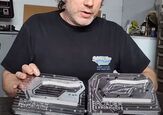



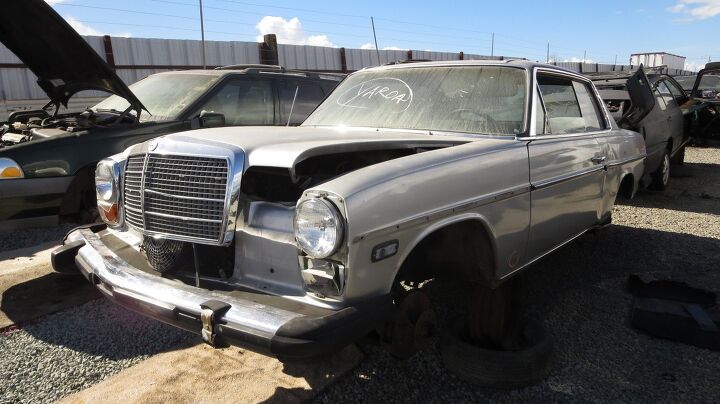
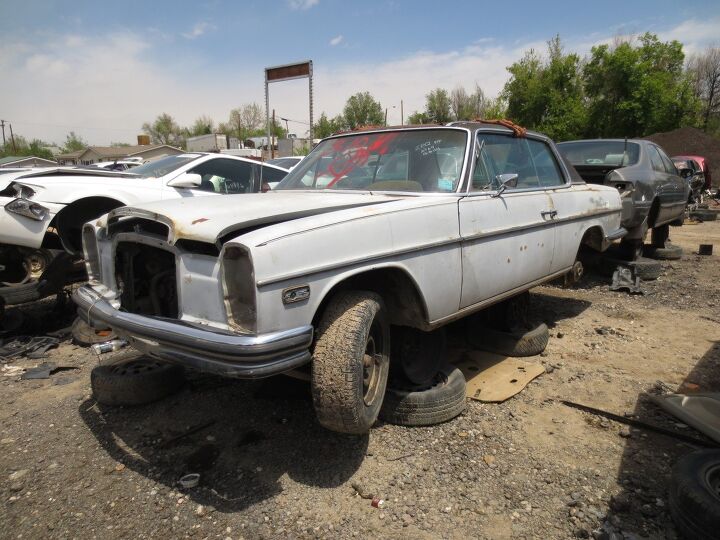
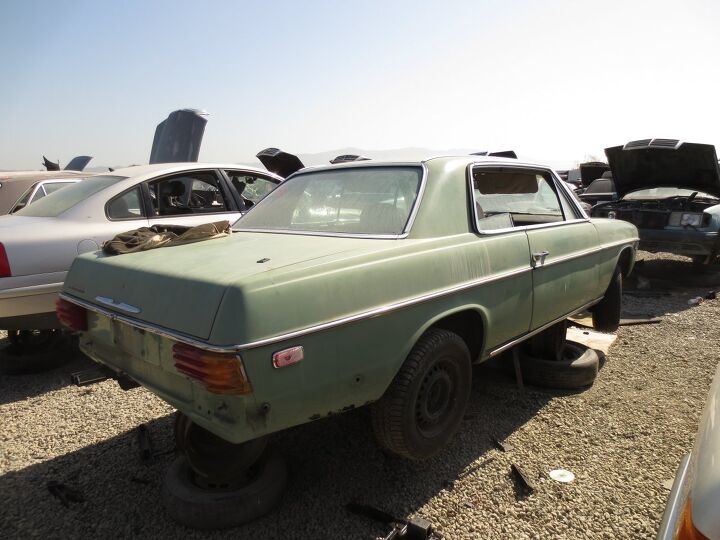
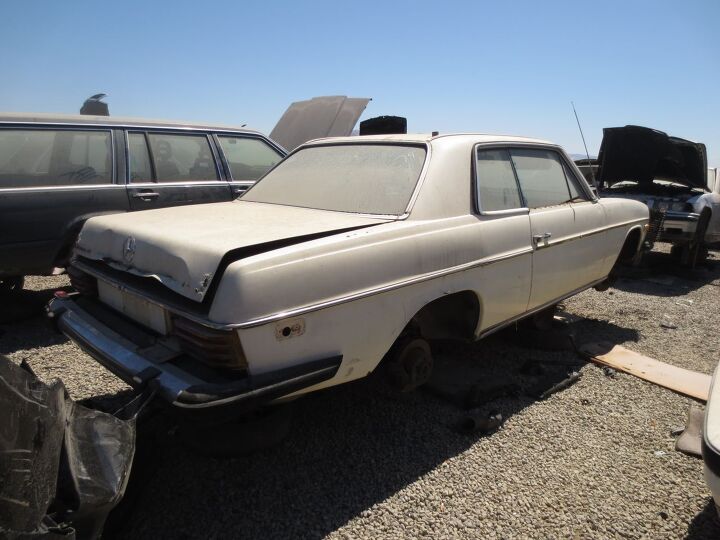
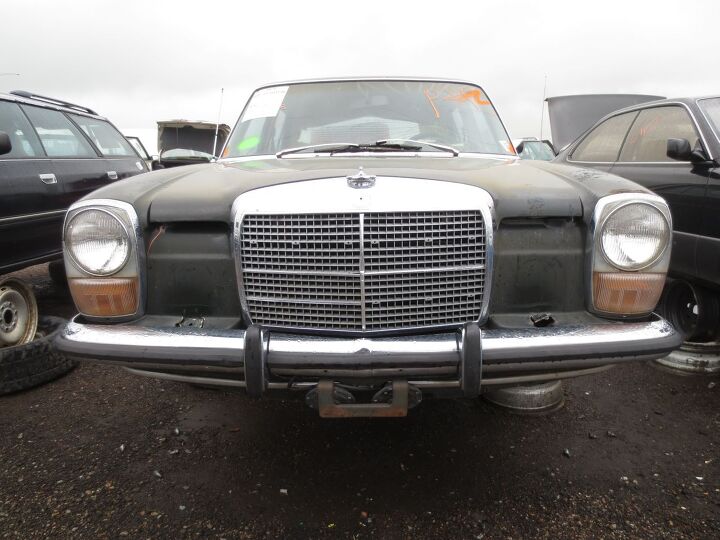













Recent Comments